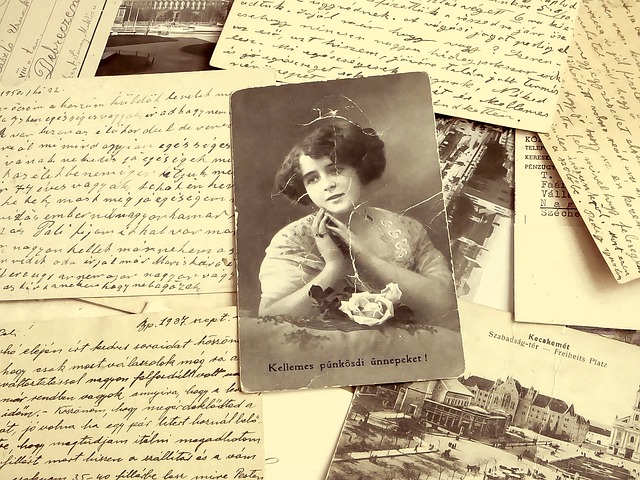How To Make Your Family History Come To Life
October 13, 2020
You’ve spent the last couple of years researching your family history. You even hired a professional genealogist to track down the information you couldn’t uncover on your own. Now you are ready to share your findings with the rest of your family.
You could go with a basic family tree diagram, or a journaled scrapbook, but you really want to make the stories of your ancestors come alive in your book.
So, how do you accomplish this? To get started, just follow these steps:
9 Steps to Turning Your Family History Into an Intriguing Nonfiction Story
1. Narrow Your Scope
Depending on how far back your research took you, you could have thousands of people in your family tree. So, who should be included in your book?
The first step to writing your family history book is to decide who and what you want to write about.
Do you want to write your personal family history, with stories about the direct descendants from both your maternal and paternal lines?
Or are you just planning to tell about one side of your family, with historical background facts thrown in?
Are you going to focus on one particular person, like your favorite grandma, and tell the story of how she and her family immigrated to America? Or do you want to tell the entire family history from as far back as possible?
Narrowing down exactly who you want to include in your book, and how much supporting information you want to add, will help you to figure out what to write about.
2. Decide What Style and Tone to Use
As with any good book, it’s important to nail down the style and tone you wish to convey.
Do you want your book to be lighthearted and humorous? Or do you prefer a more serious tone?
Do you want to write in an informal way, as if you are passing stories down for future generations? Or would you rather keep it more formal and academic?
Much like the tone you use when speaking, a writer’s tone is the way in which they say things. Your book could include sad stories about family members who lived through the Holocaust, but your tone might still be uplifting and hopeful.
Style, on the other hand, is the words, syntax, sentence lengths, and structures that you use to support your tone.
Deciding on (and sticking with) a style and tone for your writing is imperative in keeping your readers’ interest.
3. Make an Outline

Before you can actually start writing, you need to first organize your facts and documents into an outline for your book.
An outline is the map you will use to structure your writing. It can be very detailed and include notes about every person and story in each chapter, or it can simply be bullet points showing who and what you plan to write about in each section.
Your outline should also include a plan for how your book will be laid out. If your book is about your entire family tree, you may decide to write it in several parts, with each part corresponding to the separate branches.
Or, if you are just writing about your paternal ancestors, you might want to have each generation represent a separate chapter.
Regardless of what your outline looks like, the important thing is to write one. If you start writing without a good outline, the process will take much longer, and your book will more likely end up being thrown together haphazardly, with important details left out.
4. Conduct Supporting Research
You have the skeleton for what you want to write about, but you will likely need some supplemental information to help make your story more interesting.
It’s not that your five-time great grandparents didn’t live exciting lives, but when you are dealing with the distant past, you’re not likely to have more than a few facts and documents about your ancestors.
To make up for the lack of stories and pictures for those generations, you’ll need to conduct some period research.
For example, if your family history research showed that your ancestors lived in England in the mid-1600s, it might be interesting to include information about the English Civil War.
Or, if your ancestors immigrated to the United States from Germany in the late-1700s, your story would benefit from adding some background information about the Industrial Revolution and how it affected German farmers.
Taking the time to research what was going on in the world when your ancestors lived will not only help you better understand their lives, but it will also add great depth to your book.
5. Interview Family Members
Do you have any living relatives who may have first-hand information, or would have more details about the family stories that you have been told?
If you are lucky enough to still have grandparents who can fill you in on some of the family secrets, it is well worth taking the time to interview them.
While you can gather a great deal of valuable information from just listening to them tell stories, we recommend that you have some questions prepared to help jog their memories and make them think about things that they might not naturally tell you.
We also suggest that you make sure to record your interviews so that you can refer back to them when you are doing your writing.
For some great starter interview questions, check out our guide to family history interviews.
6. Start Writing!

Now that you’ve narrowed down exactly what (and who) you want to write about and have decided on how you want your book to be structured, it’s time to start writing.
In general, with family history books it’s best to write in chronological order. You can start with your own personal story and work your way backward, or you can start with your earliest known ancestor and work your way to the present.
Either way, don’t bounce around between generations. That can confuse the reader and cause them to quickly lose interest.
Another way to ensure you keep a captive audience is to add as much detail as possible to your writing.
Nobody wants to read a book full of just names and dates. Incorporating lots of personal stories and background information in your book will make it more interesting and memorable.
For example, if you have a document that shows that Joe Smith died in 1875, and another document that shows his widow got re-married in 1876, writing “Joe Smith died in December 1875. Sally Smith re-married in August 1876” is a bit dry and boring.
However, adding more details will automatically make the story more intriguing:
“Joe Smith passed away in December 1875 after battling pneumonia during Virginia’s coldest winter on record. Just nine months after his death, his widow, Sally Smith, married a local widower who had four young children of his own.”
When you are writing your book, it’s also advised that you consider documenting your sources.
This is not a requirement, and some people prefer to leave sources out, but it can be helpful to know where the information you found came from. Even if it was just from a story that your great-aunt Betty told you.
7. Have Your Book Edited and Proofread
As tempted as you may be to skip this step, don’t!
Even the most experienced writers benefit from having both an editor and a proofreader look at their work.
An editor will be able to read your book with a fresh set of eyes, make sure it flows well, and let you know if there are any areas that are confusing or missing information.
They will also check for any inconsistencies or conflicting facts in your book.
Then, once your editor has worked their magic, your proofreader will check for spelling mistakes, grammatical errors, or typos, and will ensure that your book is polished and ready to publish.
8. Pack Your Story with Photos and Images

Do you have pictures from your grandmother’s baby book? Or how about a copy of your great-grandfather’s family portrait? Adding images to your book will help bring life to the people in it.
It’s one thing to tell the story of your grandparents eloping and having their honeymoon at Coney Island. Including pictures of them together on the Cyclone roller coaster will take your book to the next level.
And if you are lacking in old family photos, consider adding images of ship manifests, immigration cards, military draft records, or other documents you came across in your research.
By adding these things to your book, you are not only telling the history of where your family came from but are showing visual evidence that those stories are real.
Another helpful visual to include is a family tree that shows all the people in your book and their relationship to each other and you. This can help your readers keep track of the numerous characters in your family’s history.
9. Publish Your Book!
Because this is a family history book, chances are you are not planning on trying to sell it to the masses. So, attempting to get picked up by a traditional publisher is not something you will be looking to do.
However, you will probably want to have at least one copy of your book printed (even if you are planning on mainly distributing eBooks to your family members).
While publishing can be done on your own through platforms such as Amazon KDP, it does pay to hire an independent publishing company, if you can afford it.
Not only will an independent publisher help you with the process itself, they can also assist with formatting and adding visuals so that your final published product is the best it can be.
If you are unsure what publishing route is best for you, check out this great blog on choosing a publisher for your family history book.






























